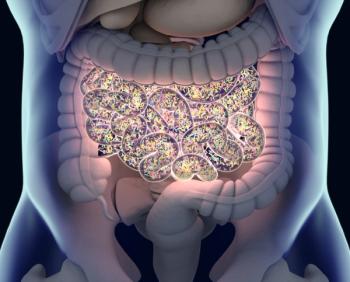
Oncology NEWS International
- Oncology NEWS International Vol 5 No 8
- Volume 5
- Issue 8
Dr. Kessler Corrects Misapprehension That The FDA Cannot Regulate Tobacco Products
BETHESDA, Md--Many people believe that the law under which the FDA regulates foods, drugs, devices, and cosmetics contains an exception for tobacco, but FDA Commissioner David A. Kessler, MD, told a symposium on tobacco addiction that this is not so, and that his agency plans to forge ahead with its proposed regulations.
BETHESDA, Md--Many people believe that the law under which theFDA regulates foods, drugs, devices, and cosmetics contains anexception for tobacco, but FDA Commissioner David A. Kessler,MD, told a symposium on tobacco addiction that this is not so,and that his agency plans to forge ahead with its proposed regulations.
"If you go back to the 1906 Act and its successor act, the1938 FD&C [Food, Drug and Cosmetic] Act, you will find thatthe Act in no way limits the agency's ability to regulate cigarettes,"Dr. Kessler said at the conference, sponsored by the AmericanSociety of Clinical Oncology and the National Cancer Institute.
Other laws, such as the Consumer Product Safety statute and thefederal Hazardous Substances laws, do exclude tobacco, Dr. Kesslersaid. But the FD&C Act defines a drug as "an article(except for food) intended to affect the structure and functionof the body," he said.
The key word, Dr. Kessler stressed, is "intended," sincenicotine, the addictive ingredient in tobacco, undeniably affectsthe body's structure and function.
By ferreting out documents showing that tobacco companies indeedhad intended to manipulate the nicotine content of cigarettes,the FDA has made the case that tobacco products fall squarelywithin the meaning of the law, he said.
"Many people have asked me why it took so long for FDA toact," Dr. Kessler said. Although by the early 1990s therewas almost universal agreement within the scientific and medicalcommunity that nicotine is an addictive drug, the FDA did notconsider this knowledge sufficient by itself.
"In order to oversee tobacco products," he said, "FDAbelieved it needed to demonstrate that tobacco companies intendfor their product to produce nicotine's pharmacological effects."
A year-long investigation beginning in February 1994 uncovered"how the industry controls and manipulates nicotine to achieveadequate delivery," he said, "and we learned that theindustry engaged in 30 years of sophisticated research on nicotinepharmacology."
Since the agency's proposed rule (see table) was published inthe August 11, 1995 Federal Register, the FDA has gotten morethan 700,000 pieces of mail commenting on it, Dr. Kessler said,"more than for any other proposal."
According to the Federal Register notice, the objective of theproposal is to reduce roughly by half children's and adolescents'use of tobacco products. If this objective is not met within 7years of the date of publication of the final rule, the agencywill take additional measures to help achieve the reduction inthe use of tobacco products by young people.
The FDA's Proposed Regulations for the Sale Of Tobocco Products
'Keep Up the Pressure'
Former US Surgeon General C. Everett Koop, MD, challenged physiciansto take a more active role in discouraging smoking. Physiciansshould take advantage of "every single professional encounterwith a patient to intervene against smoking," he said atthe ASCO/NCI symposium.
Even in social settings, doctors should discourage people fromsmoking. "Just as people expect Chicago Bulls fans to talkabout basketball during the playoffs, they should expect physiciansto speak out against smoking any chance they get," he said.
Tobacco advertising targets children, he said, "to maximizethe length of time customers buy their product before that productremoves them from the market." But smoking does not comenaturally to children. "It takes words and images to getkids to smoke, and we can use words and images to keep kids fromsmoking."
Articles in this issue
over 29 years ago
Chemo Improves Pain Relief in Advanced Prostate Cancerover 29 years ago
NCCR Urges Congress to Support Senate Bill for Cancer Researchover 29 years ago
Researchers Propose New Treatment Guidelines for HIVover 29 years ago
Salvage Cryotherapy for Prostate Cancer Studied at M.D. Andersonover 29 years ago
FNA Dropped From RDOG Study Due To High Rate of Insufficient Samplesover 29 years ago
New Thinking on HIV Progression Leads to New Strategiesover 29 years ago
Hospitals Told Not to Capitate for 'Wrong' Reasonsover 29 years ago
More Study Needed of Possible Carcinogenesis of Winter Gas Additiveover 29 years ago
President Makes NCAB AppointmentsNewsletter
Stay up to date on recent advances in the multidisciplinary approach to cancer.






























































































